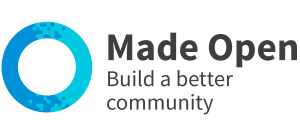
How to plan a marketing strategy for the year ahead on your community platform
As an admin of a community platform, having a clear marketing plan helps you focus your efforts, stay consistent and grow your platform with purpose.
Whether you're running a neighbourhood hub, a wellbeing network, or a local volunteering site, a simple annual plan can guide your content, outreach and engagement throughout the year.
Here’s a step-by-step guide to help you map out your marketing for the next 12 months.
1. Start with your goals
Before diving into tactics, take time to clarify what success looks like.
-
Do you want to grow your number of users or contributors?
-
Is your goal to increase activity listings, events, or feedback?
-
Are you hoping to engage a specific group—like young people, carers or new volunteers?
Choose 2–3 key goals to keep your plan focused and measurable.
2. Understand your audience
Think about the different groups using—or potentially using—your platform:
-
Who are they (age, role, interests)?
-
Where do they spend time online?
-
What kind of messages and content are likely to catch their attention?
If you’re not sure, start with your existing users. Survey them or talk to a few in person to gather insights.
3. Create a seasonal content calendar
Break the year into quarters or months, and map out key moments such as:
-
Local or national awareness weeks (e.g. Volunteers Week, Mental Health Awareness Week)
-
School holidays
-
Seasonal campaigns (e.g. winter warm spaces, summer activities)
-
Any events or platform milestones you’re planning
This calendar becomes the foundation for your email newsletters, social media posts and any outreach campaigns.
4. Choose your channels
Decide which channels you’ll use regularly. For example:
-
Social media – Facebook, Instagram or Threads
-
Email newsletters – Monthly updates to users or members
-
Local outreach – Posters, radio, word-of-mouth via partners
-
In-platform messaging – Mass messages or direct messages to users
Choose the channels where your audience already is, and where you can realistically post or engage consistently.
5. Plan campaigns around your goals
Now it’s time to build out a few campaigns throughout the year that support your goals. Each campaign should include:
-
A clear message and call to action
-
Who it’s for (target audience)
-
What channels you’ll use
-
Any visuals, content or events involved
-
A timeframe
For example:
Goal: Increase event listings
Campaign: “What’s On in (Your Area)”
Timing: March–April
Actions:
-
Weekly social media posts featuring new events
-
Emails to local groups encouraging them to list their activities
-
Posters in libraries and community centres
6. Set a simple tracking system
Choose a few key indicators to measure each month or quarter.
For example:
-
New user sign-ups
-
Number of activities or events posted
-
Email open and click rates
-
Engagement on social media (likes, shares, comments)
Track progress against your goals and adjust your campaigns as needed.
Final thoughts
Planning your marketing strategy for the year ahead doesn’t have to be complex. By setting clear goals, understanding your audience and building a seasonal content calendar, you’ll be better placed to attract new users, keep your community engaged and show the value your platform brings all year round.
No plan should be set in stone. Be ready to test different ideas—like A/B testing social media posts or trying out new formats like short videos or blog posts. What works in one season or for one group might not work in another.
Stay open to feedback, learn from what your users respond to, and keep refining your approach.
And remember: consistency, relevance and a personal tone often matter more than polished perfection. Keep showing up and your platform will grow stronger, one step at a time.
Free templates for Made Open admins
If you are an admin of a Made Open community platform, sign in or register to this platform (different account to your own platform) and download these resources for free.



Please sign in or register to make a comment.